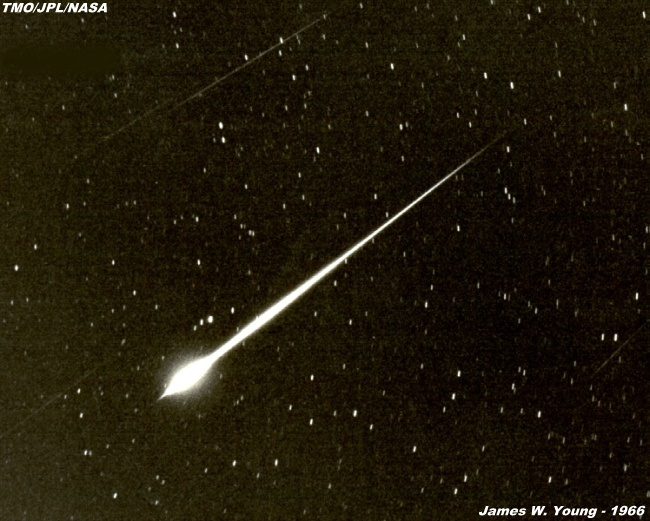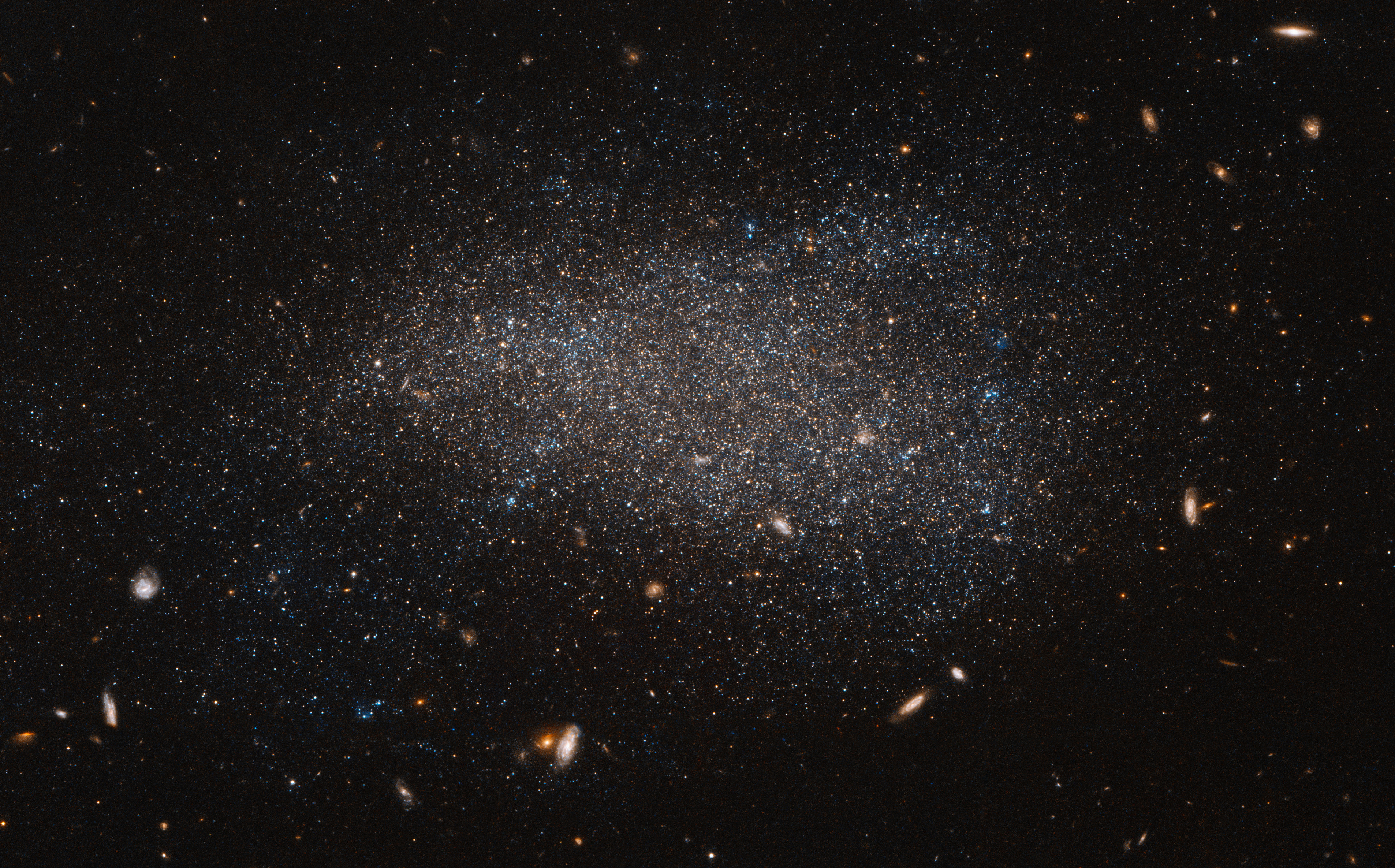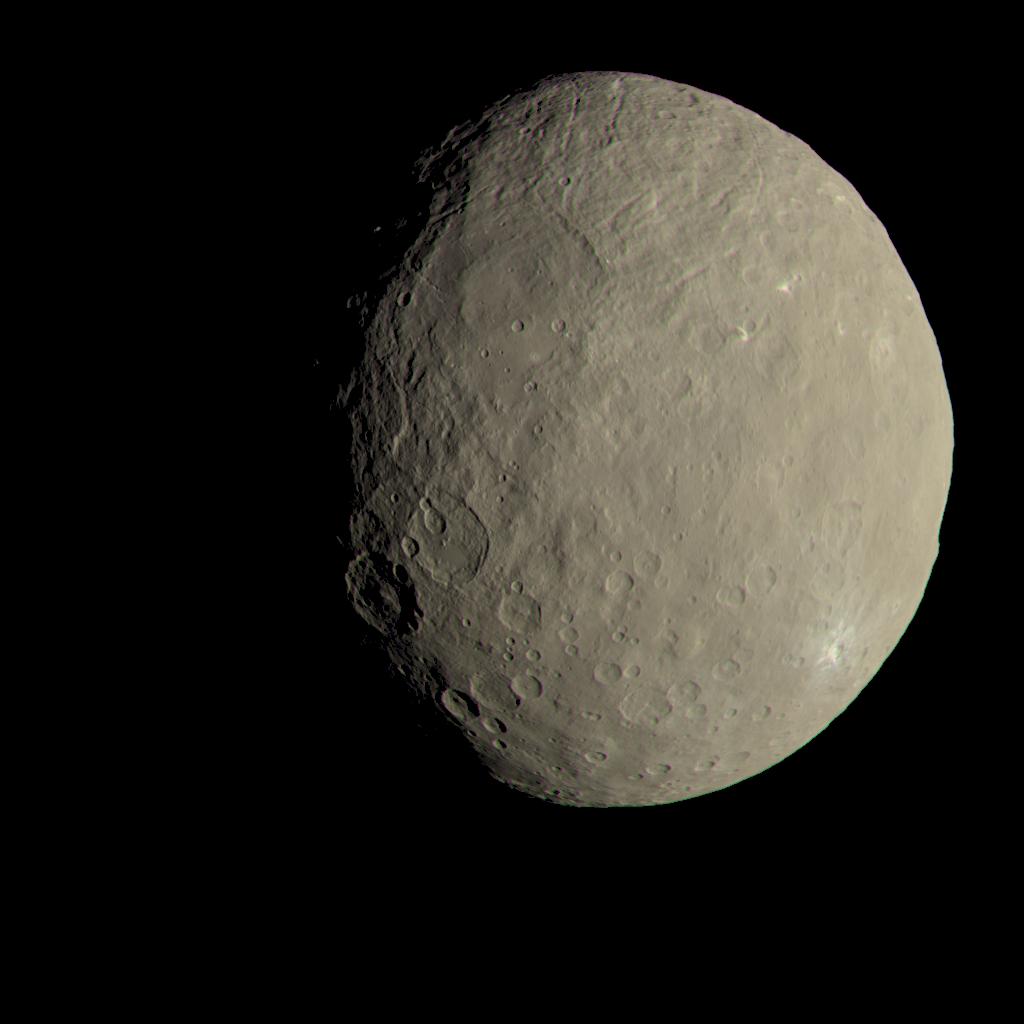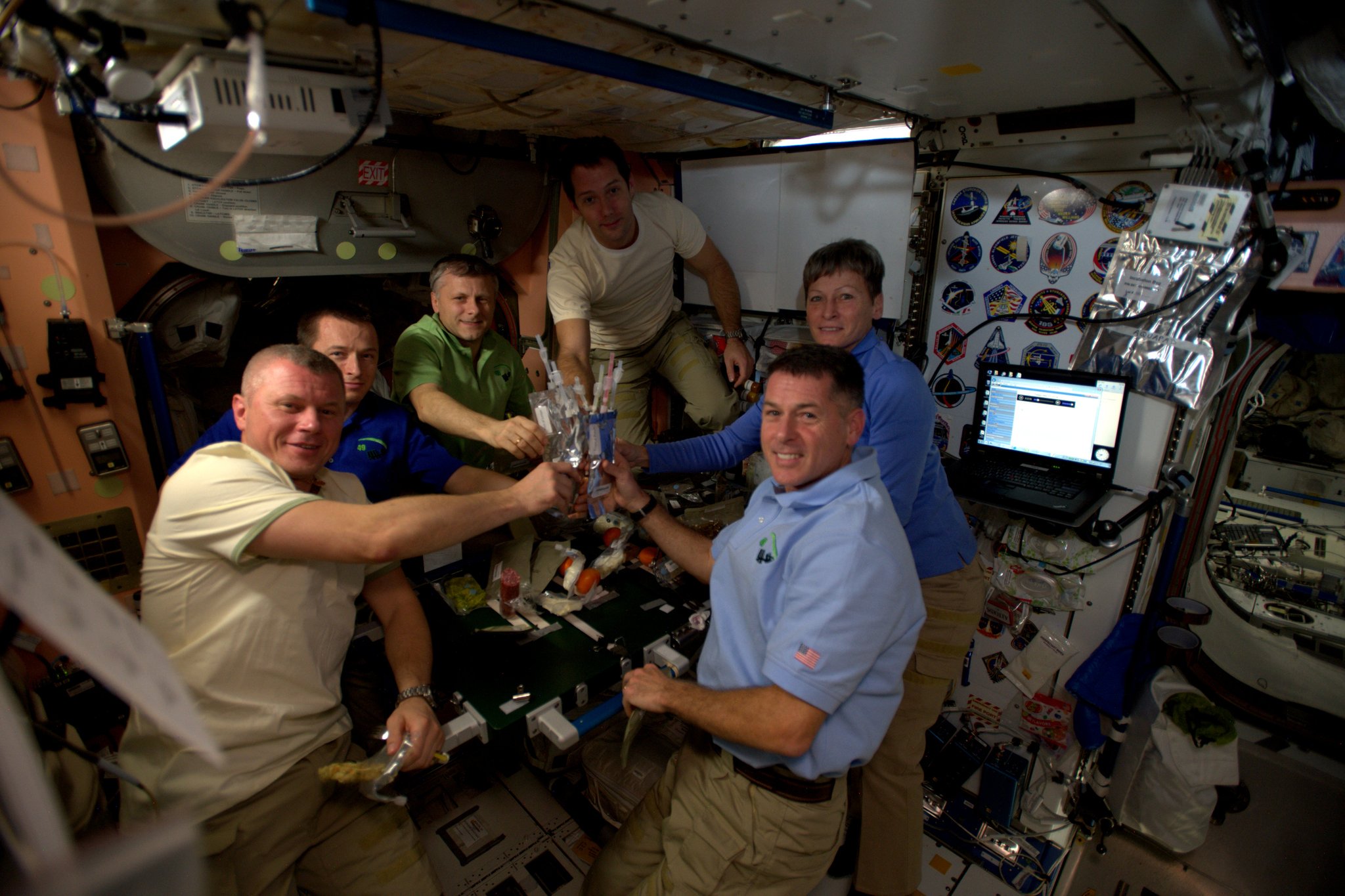Space Image of the Day Gallery (November 2016)
Airplane Transits the 'Supermoon'
Tuesday, November 15, 2016: Yesterday's full moon, or supermoon, was the closest and brightest it has been since 1948. Photographer Stan Honda caught this photo of a West Jet airplane flying in front of the supermoon after taking off from LaGuardia Airport in New York on Sunday evening (Nov. 13). — Hanneke Weitering
Saturn in 'Watercolor'
Wednesday, November 16, 2016: In this new photo of Saturn taken by NASA's Cassini orbiter, it looks as though an artist has decorated the planet with watercolor paints. The bands and swirls represent the flow of air and clouds in Saturn's atmosphere. — Hanneke Weitering
1966 Leonid Meteor Storm
Thursday, November 17, 2016: The Leonid meteor shower peaks tonight. On this day 50 years ago, an outburst of Leonid meteors stormed through skies across the world. In this historic NASA photo, a 1966 Leonid "fireball" streaks through the night sky. NASA astronomer James Young captured the photo at the Table Mountain Observatory in California. — Hanneke Weitering
Soyuz's Tail of Fire
Friday, November 18, 2016: A Russian Soyuz rocket carrying three new crewmembers to the International Space Station blasted off from the Baikonur Cosmodrome in Kazakhstan yesterday. NASA photographer Bill Ingalls captured this long exposure photo of the Soyuz MS-03 spacecraft's liftoff. — Hanneke Weitering
Hubble Spies an Irregular Galaxy
Monday, November 21, 2016: Meet NGC 4789A, an irregular dwarf galaxy in the constellation Coma Berenices. Unlike orderly spiral galaxies such as the Milky Way, NGC 4789A is shaped like an amorphous blob. The galaxy contains a mix of young, blue stars and old, red stars. Other distant galaxies are also visible in this image, which was taken by the Hubble Space Telescope. — Hanneke Weitering
Ceres by Dawn's New Light
Tuesday, November 22, 2016: NASA's Dawn spacecraft captured this image of the Ceres, a dwarf planet that is also the largest asteroid in the solar system. This color-adjusted photo shows what Ceres would look like to the human eye. It is one of several close-up shots of Ceres released this week. — Hanneke Weitering
Pesquet in Space
Wednesday, November 23, 2016: ESA astronaut Thomas Pesquet, the first French astronaut to live on the International Space Station, arrived at the orbiting laboratory last Saturday in a Soyuz spacecraft with Russian cosmonaut Oleg Novitsky and NASA astronaut Peggy Whitson. This photo of Pesquet in front of the Cupola window is the first photo he has shared from space on social media. He commented, "The International Space Station is amazing: better than in my best dreams. I wish everybody could get the chance to come up here!" — Hanneke Weitering
Breaking space news, the latest updates on rocket launches, skywatching events and more!
Thankful for the Moon
Thursday, November 24, 2016: As Americans celebrate the Thanksgiving holiday on Earth and in space today, NASA is celebrating a moon anniversary to mark the return to Earth three Apollo 12 astronauts on this day, Nov. 24, in 1969. The astronauts, Charles "Pete" Conrad (left) Richard Gordon (center) and Alan Bean proved that the Apollo 11 moon landing in July 1969 was no fluke and that NASA's moon landings were repeatable technological and scientific feats. The Apollo 12 mission sent Conrad and Bean to visit the Surveyor 3 moon lander, a pinpoint mission. -- Tariq Malik
Happy Thanksgiving from Space!
Friday, November 25, 2016: The six-person crew of Expedition 50 celebrate a very happy Thanksgiving on the International Space Station on Nov. 24, 2016 with rehydrated turkey, stuffing, potatoes and vegetables. -- Tariq Malik
Martian Winter Solstice
Monday, November 28, 2016: Today is Mars' winter solstice, or the first day of the Martian winter in the planet's northern hemisphere. During the winter, temperatures can drop to minus 195 degrees F (minus 125 degrees C), and snowflakes made of frozen carbon dioxide sometimes fall from the sky. This photo, taken by NASA's Mars Reconnaissance orbiter, shows frost-covered sand dunes in Mars' north pole in the spring of 2012. The dark spots are thawing patches of carbon dioxide and ice. — Hanneke Weitering

Space.com is the premier source of space exploration, innovation and astronomy news, chronicling (and celebrating) humanity's ongoing expansion across the final frontier. Originally founded in 1999, Space.com is, and always has been, the passion of writers and editors who are space fans and also trained journalists. Our current news team consists of Editor-in-Chief Tariq Malik; Editor Hanneke Weitering, Senior Space Writer Mike Wall; Senior Writer Meghan Bartels; Senior Writer Chelsea Gohd, Senior Writer Tereza Pultarova and Staff Writer Alexander Cox, focusing on e-commerce. Senior Producer Steve Spaleta oversees our space videos, with Diana Whitcroft as our Social Media Editor.










